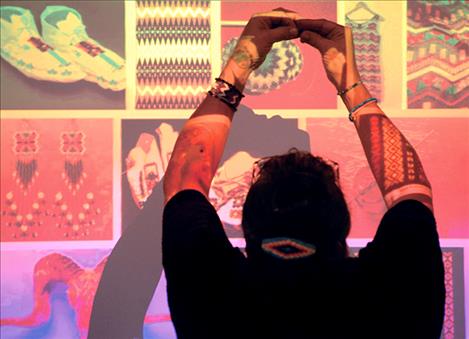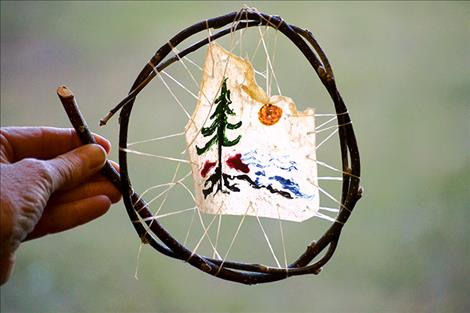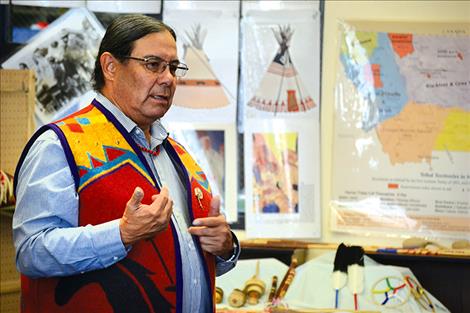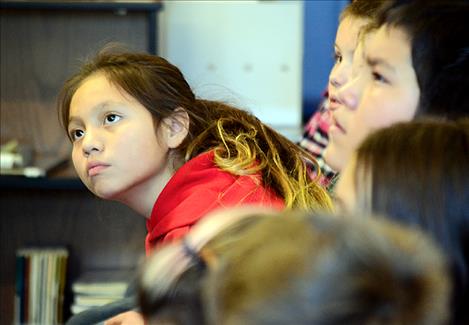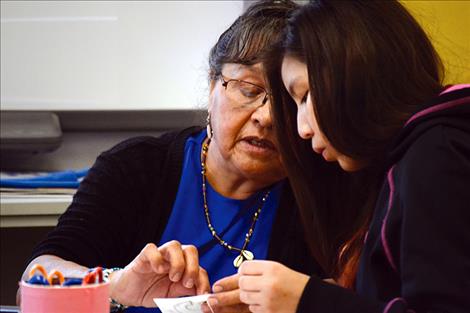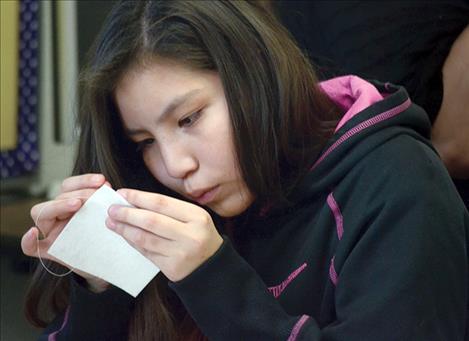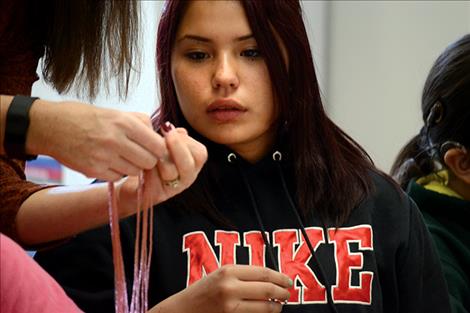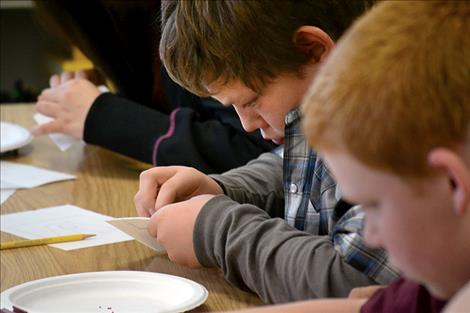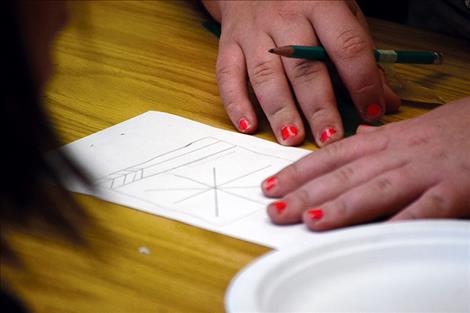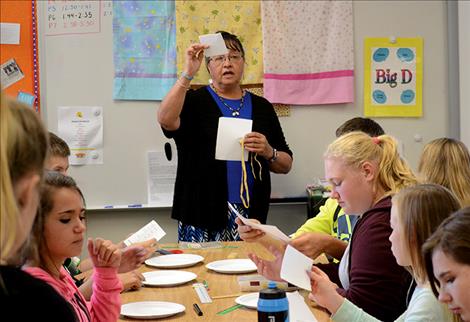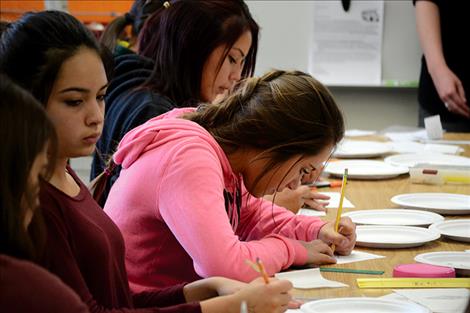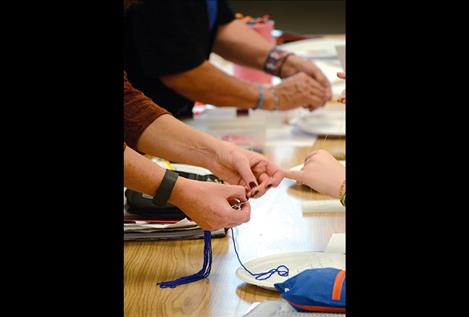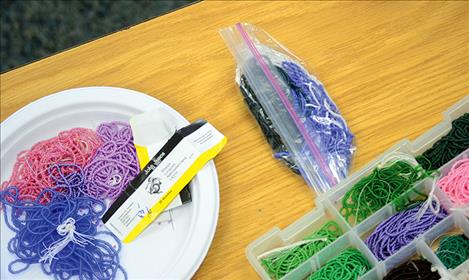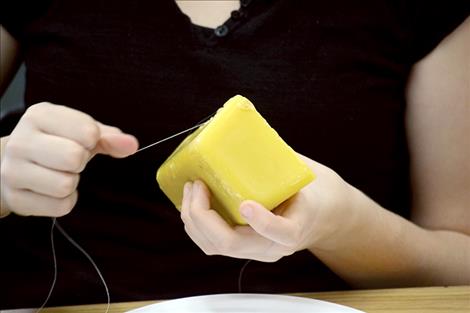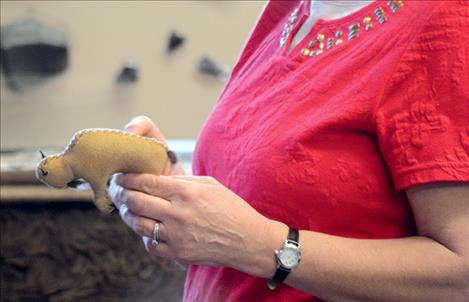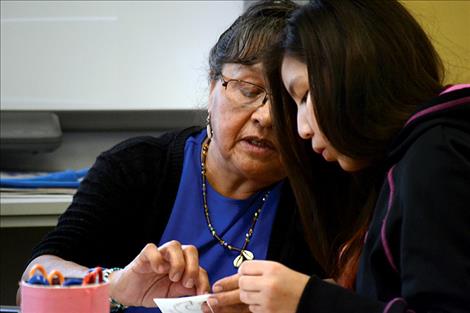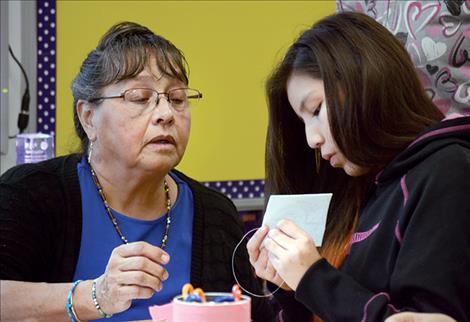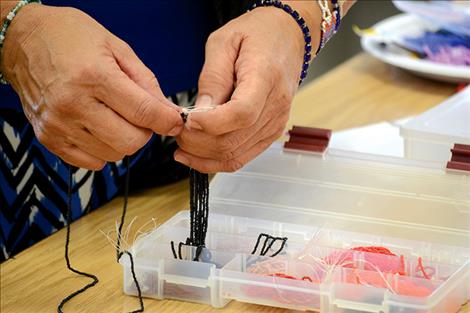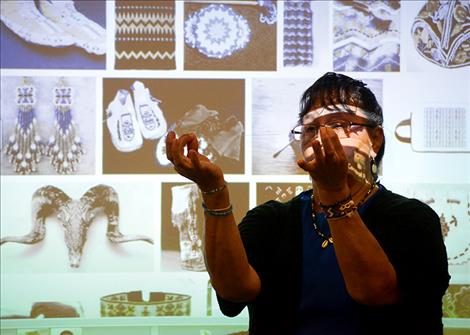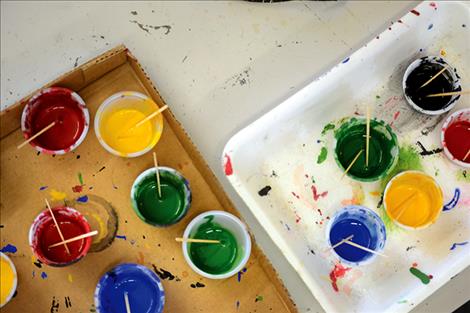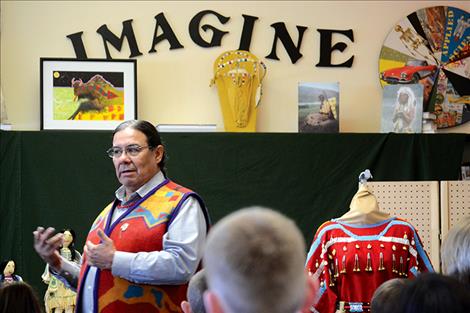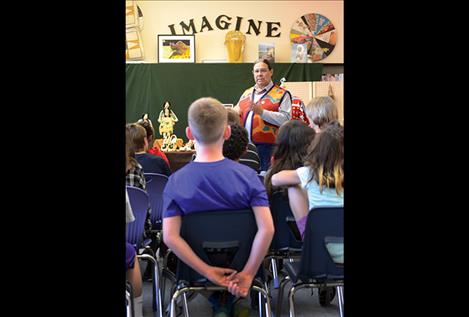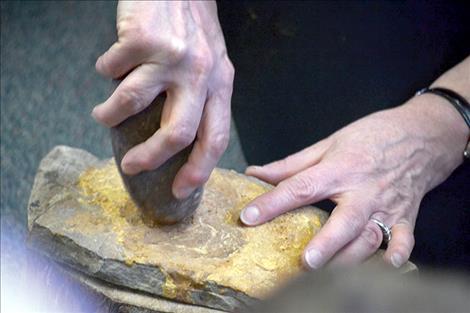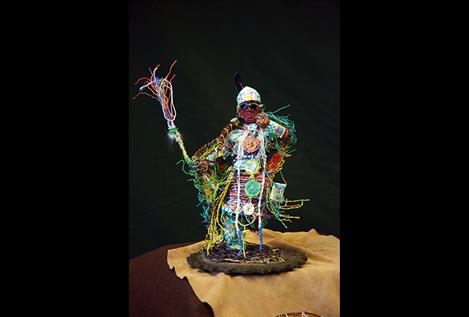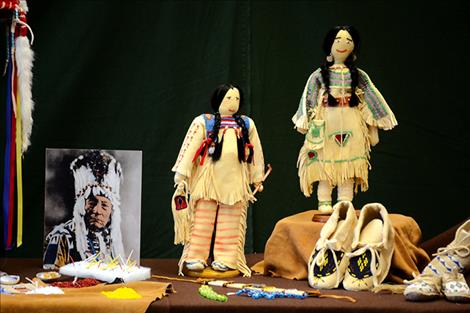Native art records history
Hey savvy news reader! Thanks for choosing local.
You are now reading
1 of 3 free articles.
Smokey Rides At The Door encouraged Polson students to learn about their own family history and tell their own stories through words and art as part of Kalispell’s Hockaday Museum of Art “Traveling Medicine Show.”
To help celebrate Native American Heritage Month, Rides at the Door and his wife Darnell, both of the Blackfeet Nation, shared wisdom and skills with middle school students last Thursday.
“What you do today will reflect on what you do in the future,” Smokey Rides At The Door told fifth-grade students. As an example, he explained how Russia’s launch of the Sputnik, the first satellite into space, was the catalyst for America’s aggressive space program — out of which has grown many satellites that enable much of modern technology.
Smokey Rides at the Door stressed the importance of passing history on to the next generation, explaining that his name was given because his ancestor was a warrior who was adept at taking horses from other tribes.
“So you can see that stories are important,” he said. “It’s important to know who and why and what. It’s what makes us human people.”
Native American art pieces from the museum were displayed to help illustrate storytelling through art.
Kathy Martin, director of education for Hockaday Musuem of Art, asked students to look for stories in art — ask, “is it modern, or from long ago?”
For instance, a small stuffed buffalo made of leather — not synthetic fur — was an “old play toy,” but also a teaching tool.
Martin showed Polson students a colorful wire sculpture by local artist Dwight Billedeaux, and students knew it was a fancy dancer at a powwow. Children in schools off the reservation usually don’t recognize that, Martin said. Because Polson students live on the Flathead Indian Reservation, “They have some great background knowledge.”
Martin taught students how to make paint from natural pigments. She smashed a reddish-brown rock from McDonald Lake. To make paint, she explained, it also needed liquid, such as water, and a binder. The binder often came from boiled cow hides, which produced a gelatineous mass used like glue, although now people use Elmer’s glue — which still has a cow image in its logo.
Through each paint-making step, the Blackfeet would sing a specific song, she explained. The Blackfeet tribes generally use four colors in their art — blue, yellow/ gold, red and green — with each representing something significant. Blue, resurrected from duck poop, meant winter, or north. Yellow-gold represents elders and wisdom. Red means courage or bravery, and the path of the sun. Green, often made from algae, symbolizes infants and spring.
The students used craft paint to create art on a piece of rawhide. But first, they had to use synthetic sinew to stitch it to an apple tree twig frame.
Down the hall in the Family and Consumer Sciences class, Darnell Rides At The Door patiently taught students how to bead.
Students drew a geometric design on paper, transfered the image to Pelon, threaded the needle, waxed the string, tied a knot, and began beading. The native culture, Martin said, is alive, not “something dead, although some have changed through time.”
This is the sixth year the Polson Middle School has hosted the museum program.















